Traditional Markets: A Taste of Seoul
Immerse yourself in the vibrant heart of Seoul by exploring its traditional markets. These bustling hubs offer a sensory feast of sights, sounds, and tantalizing aromas.
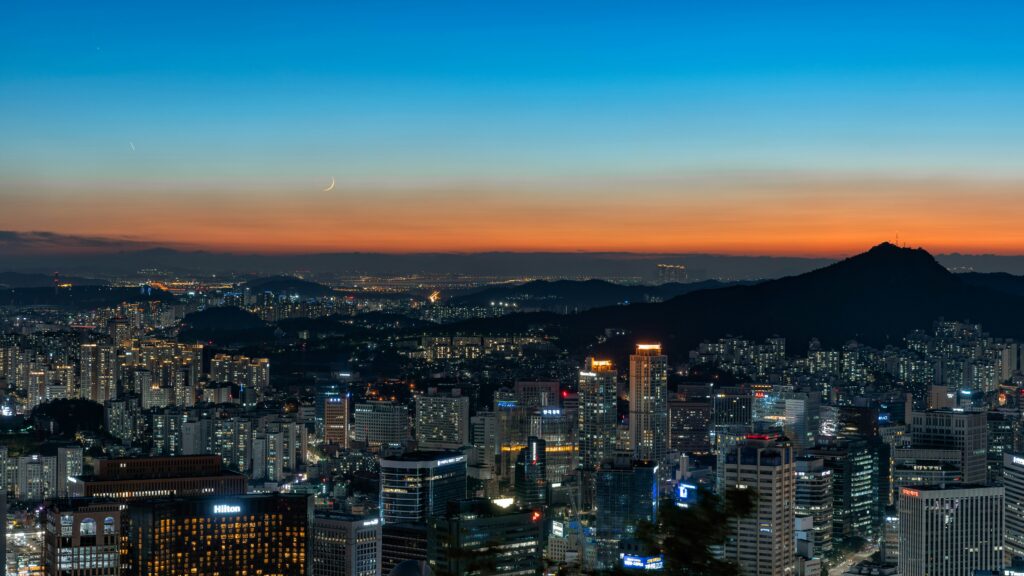
From the sprawling Namdaemun Market to the foodie paradise of Gwangjang Market, each offers a unique glimpse into Seoul’s rich cultural tapestry. Here, you can haggle over unique souvenirs, sample authentic Korean street food, and soak up the lively atmosphere.
This guide will take you on a journey through the best traditional markets in Seoul. It’s not just about shopping; it’s about experiencing the local way of life.
We’ll also share practical tips for navigating these markets. From respecting local customs to uncovering hidden gems, we’ve got you covered.
So, whether you’re an aspiring travel blogger or a curious traveler, get ready to discover Seoul’s traditional markets. It’s a taste of Seoul you won’t want to miss.
Discovering Seoul's Traditional Markets
Seoul’s traditional markets serve as vibrant windows into its storied past. Each market has its own unique charm and offerings, reflecting the diverse culture of the city. They are a place where old meets new, combining time-honored traditions with contemporary flavors and styles.
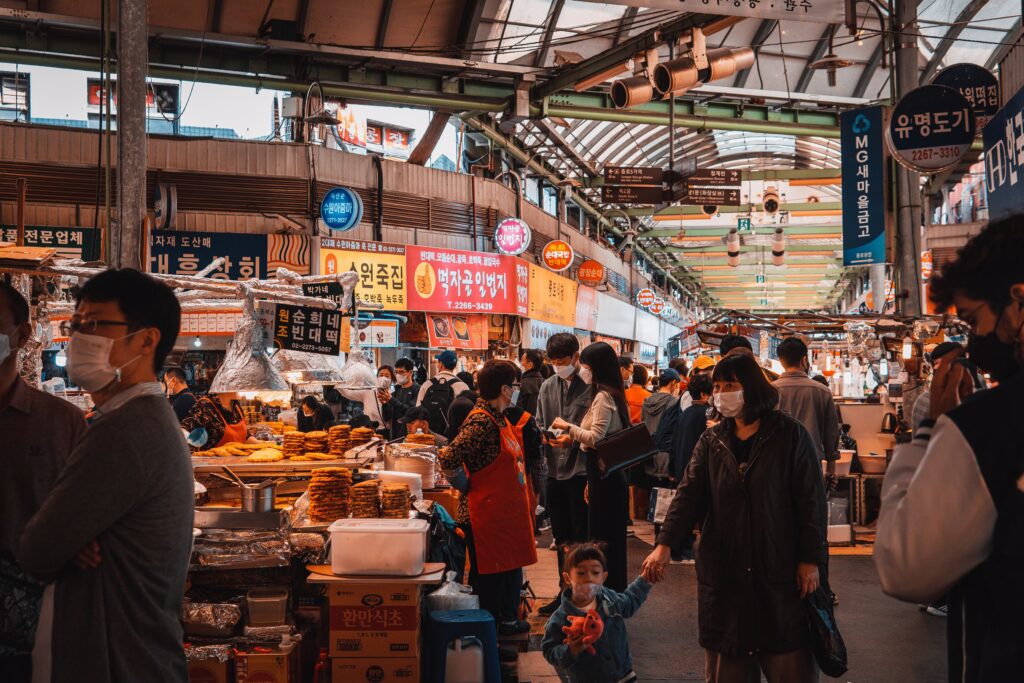
Wandering through these markets, you’ll find an array of products—from delicious street food to intricate crafts. The lively atmosphere is infectious, with friendly vendors eager to share stories. Whether you’re seeking the perfect gift or simply want to explore, these markets provide a memorable experience for every visitor.
Namdaemun Market: A Shopper's Paradise
Namdaemun Market, South Korea’s largest traditional market, offers a delightful shopping experience. Its bustling energy captures the essence of Seoul’s dynamic spirit. Strolling through its stalls, you’ll encounter a myriad of goods at reasonable prices.
This market is perfect for those seeking variety. Popular items include:
- Clothing and accessories
- Kitchenware and home goods
- Traditional Korean crafts
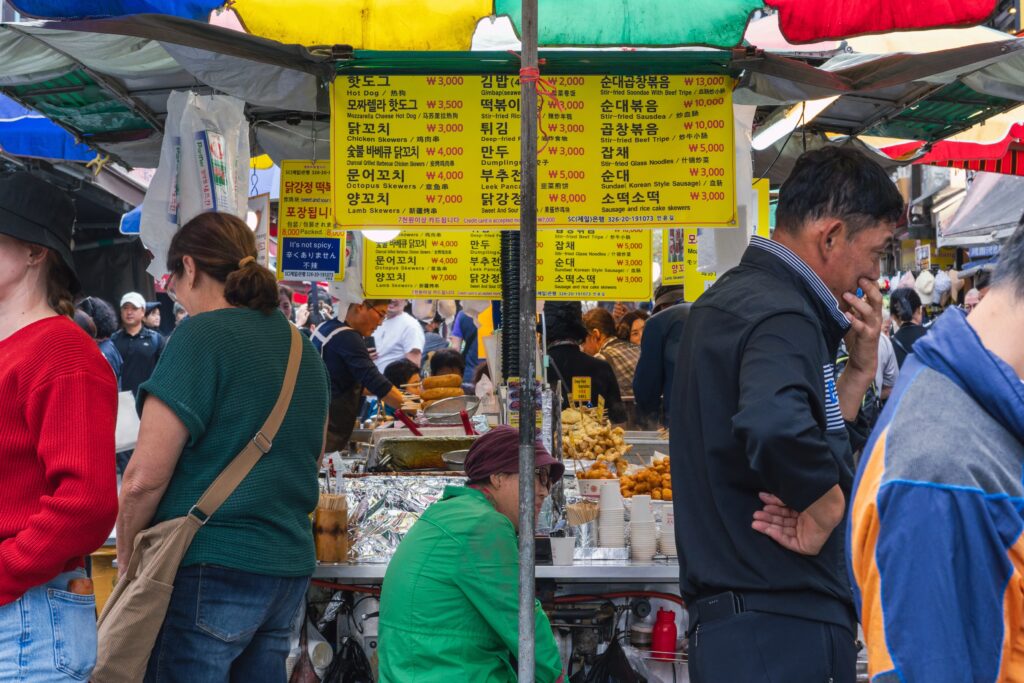
As you navigate through narrow alleys, the market’s rich history unfolds with every step. The friendly vendors are always ready to assist, making shopping both enjoyable and rewarding. Namdaemun Market truly lives up to its reputation as a shopper’s paradise in Seoul.
Gwangjang Market: The Heart of Korean Street Food
Gwangjang Market is a must-visit for food enthusiasts. It’s the oldest market in Seoul, known for its vibrant street food scene. Here, tradition meets taste as you explore the bustling aisles.
The market offers an array of culinary delights:
- Tteokbokki (spicy rice cakes)
- Bindaetteok (mung bean pancakes)
- Myeongdong sundae (blood sausage)
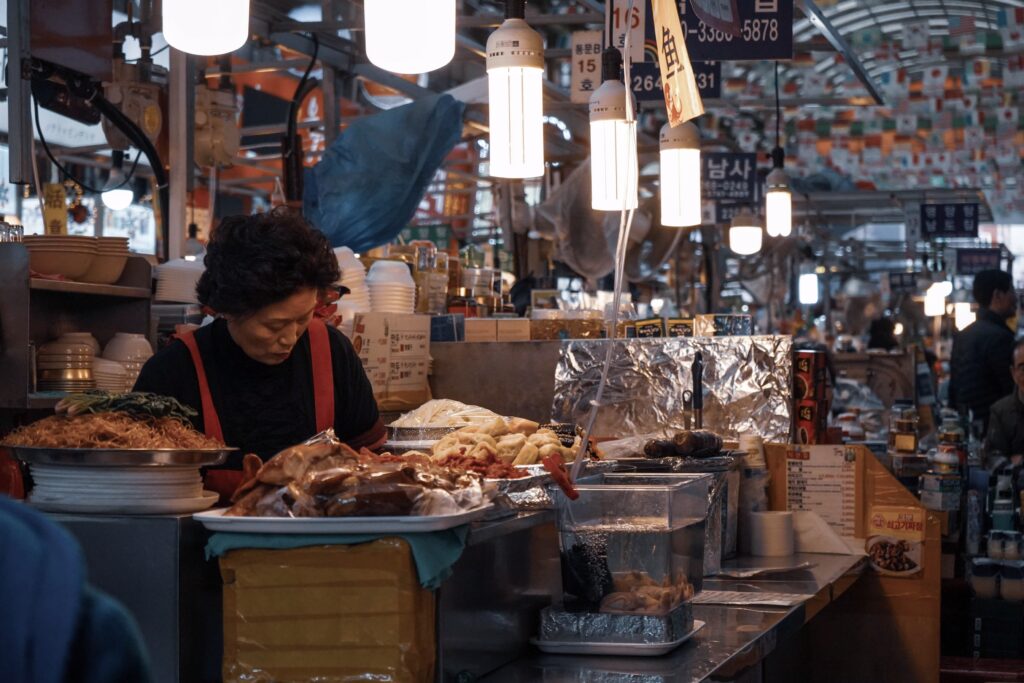
Sampling these dishes offers an authentic taste of Korea’s street food culture. The vendors, with their warm smiles, make you feel welcome as you indulge. Gwangjang Market is an exciting place to discover the flavors and aromas of traditional Korean food.
Dongdaemun Market: A Night Owl's Haven
Dongdaemun Market is a vibrant hotspot for night-time adventures. This market is renowned for merging traditional stalls with modern fashion malls. It promises a unique shopping experience under the city lights.
Visitors can expect to find:
- Trendy fashion pieces
- Traditional Korean fabrics
- Innovative street food
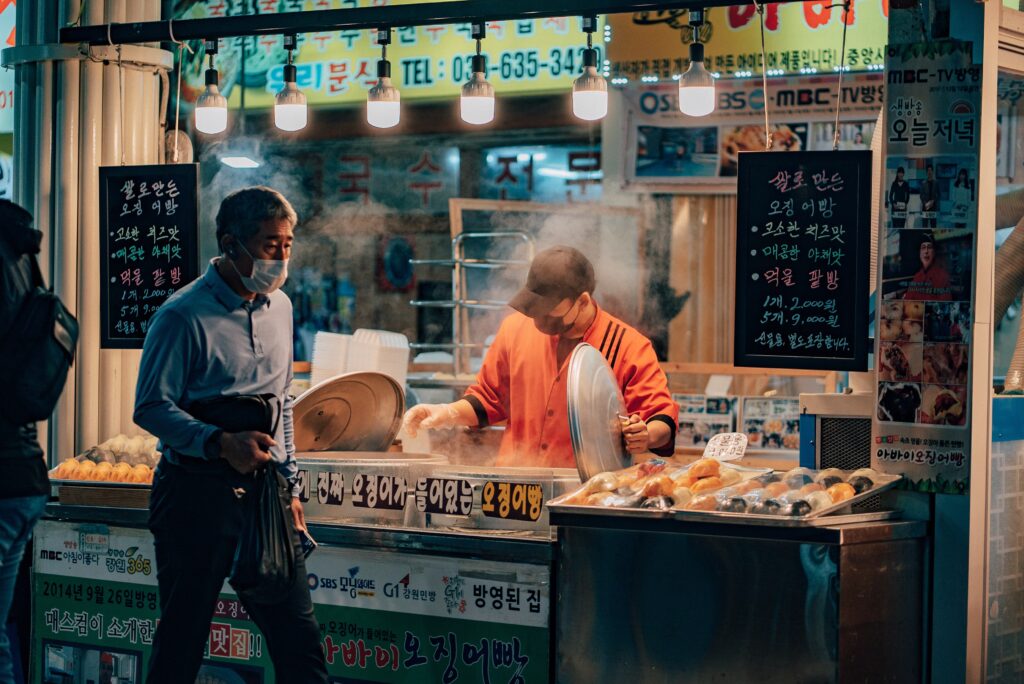
The energy here is contagious as the market springs to life after dark. Shoppers can peruse through a variety of goods while enjoying the lively atmosphere. Dongdaemun Market is where both locals and tourists come to discover the latest trends and savor late-night snacks. The market’s blend of old and new offers a dynamic experience well after sunset.
Insadong: Where Tradition Meets Art
Insadong is Seoul’s cultural heart, a place where art and history intertwine. Wander through its charming alleys filled with traditional galleries and antique shops. This district is a must-visit for those seeking authentic Korean crafts and artistic treasures.
In Insadong, you can find:
- Traditional pottery
- Korean calligraphy
- Authentic tea houses
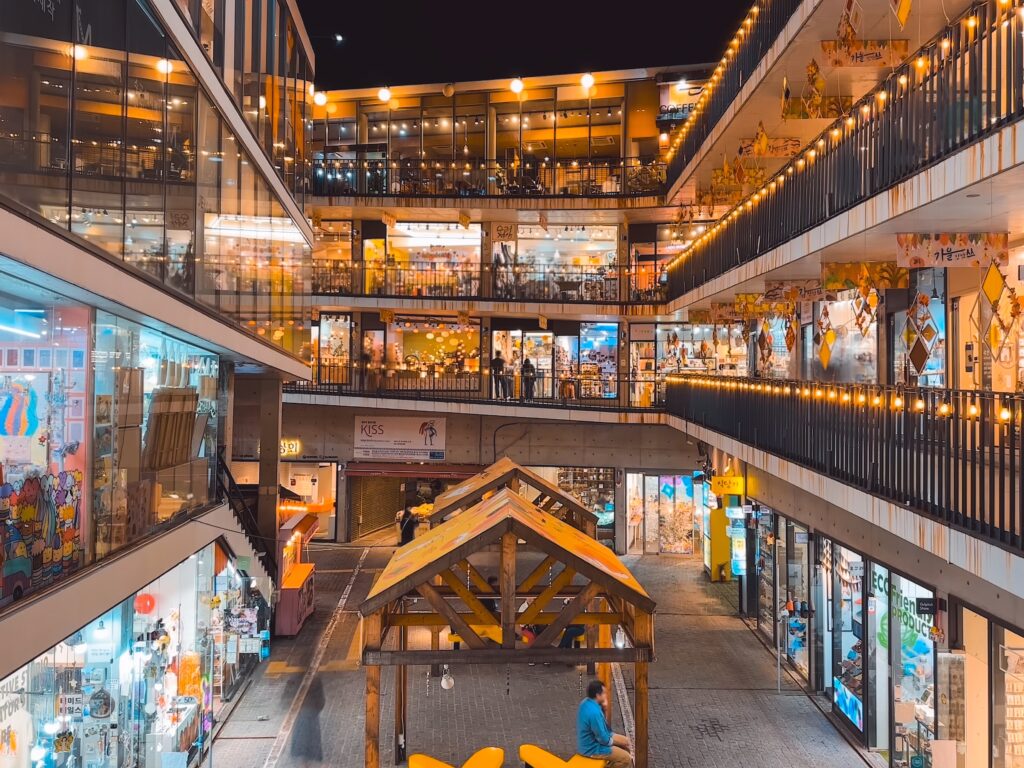
The area is famed for its vibrant art scene and traditional markets offering unique finds. Visitors often enjoy the peaceful tea houses, where one can immerse in Korean rituals. Exploring Insadong is a journey through Korea’s artistic legacy, capturing the soul of its cultural heritage in every corner.
Seoul's Night Markets: After-Dark Shopping and Dining
Seoul’s night markets come alive when the sun sets, creating a vibrant nightlife scene. These markets are perfect for those who enjoy late-night shopping and dining. Streets buzz with energy as vendors offer delicious street food and unique goods.
Here’s what to experience at Seoul’s night markets:
- Sizzling skewers and spicy tteokbokki
- K-pop merchandise and fashion finds
- Handmade crafts and quirky accessories
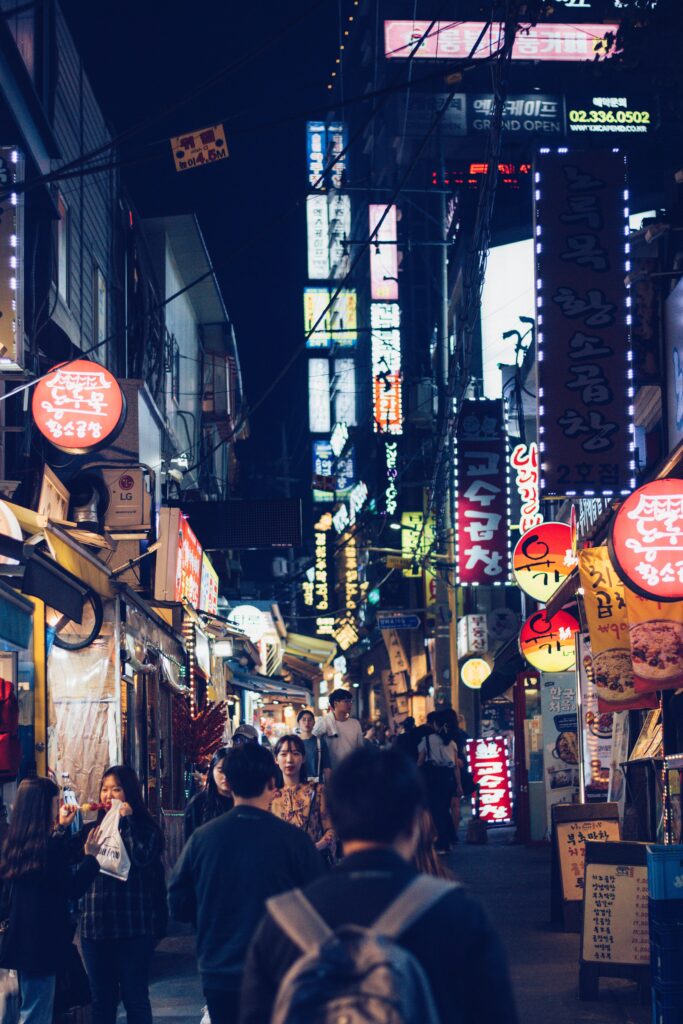
The markets not only cater to shoppers but also to food lovers. The variety of Seoul street food available after dark is astounding. Each stall offers something different, providing an endless array of flavors to try. Exploring these night markets reveals a different, more vibrant side of Seoul.
Unique Souvenirs and Traditional Crafts
Seoul’s markets are treasure troves of unique souvenirs and traditional crafts. Visitors can find authentic Korean items that reflect the country’s rich cultural history. These markets are havens for those seeking handmade gifts or meaningful keepsakes.
Some must-have traditional crafts and souvenirs include:
- Intricately designed hanbok (traditional Korean clothing)
- Handcrafted pottery and ceramics
- Authentic Korean teas and teapots
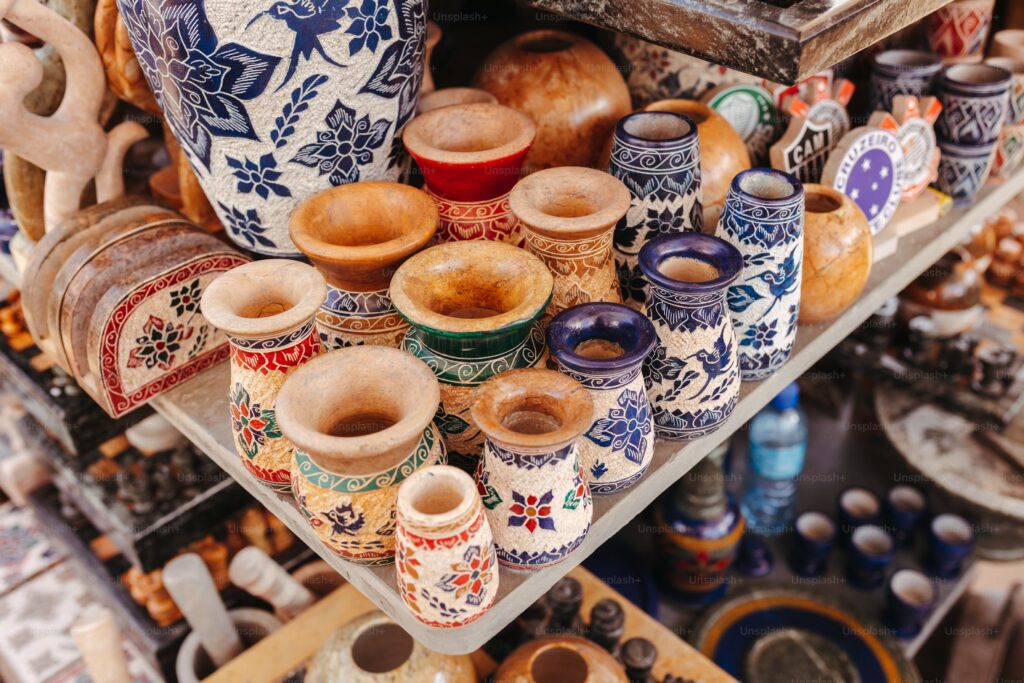
These items make for thoughtful gifts or beautiful mementos of your Korean journey. Engaging with local artisans can also enhance the shopping experience, providing personal insights into the craft. Buying directly from the makers supports local artisans and helps preserve these traditional art forms for future generations.
Tips for Navigating Seoul's Markets
Navigating Seoul’s bustling markets can be an exciting adventure. However, it’s essential to be prepared to make the most of your visit. Here are some practical tips to enhance your market experience.
- Wear comfortable shoes for the extensive walking required.
- Carry cash, as many stalls prefer it over cards.
- Learn basic Korean phrases to help with communication.
Plan your visit according to the market’s operating hours and avoid peak times if you prefer a quieter atmosphere. Respect local customs, like not haggling too aggressively. Engage with vendors politely, as they often appreciate genuine interest in their products. This respectful interaction can lead to rewarding experiences and insights.
Cultural Etiquette: Respecting Local Traditions
Respecting local customs is crucial when exploring Seoul’s traditional markets. Politeness and patience are highly valued in Korean culture. When interacting with vendors, a kind greeting and simple thank you can go a long way.
Be mindful of space, especially in crowded areas. Avoid interrupting vendors if they are busy, and be considerate of other shoppers. Photography can be sensitive; always ask permission before capturing images, especially at food stalls.
It’s also important to understand the significance of food sharing. Embrace the communal dining culture at market food courts. Trying these local customs enriches the experience and shows appreciation for the culture.
Hidden Gems and Lesser-Known Markets
For those seeking off-the-beaten-path experiences, Seoul’s lesser-known markets offer a unique charm. Venture into Euljiro’s labyrinth of tool shops or explore the quaint atmosphere of Tongin Market. These hidden gems provide a glimpse into local life and feature authentic Korean delicacies and crafts away from the usual tourist trail.
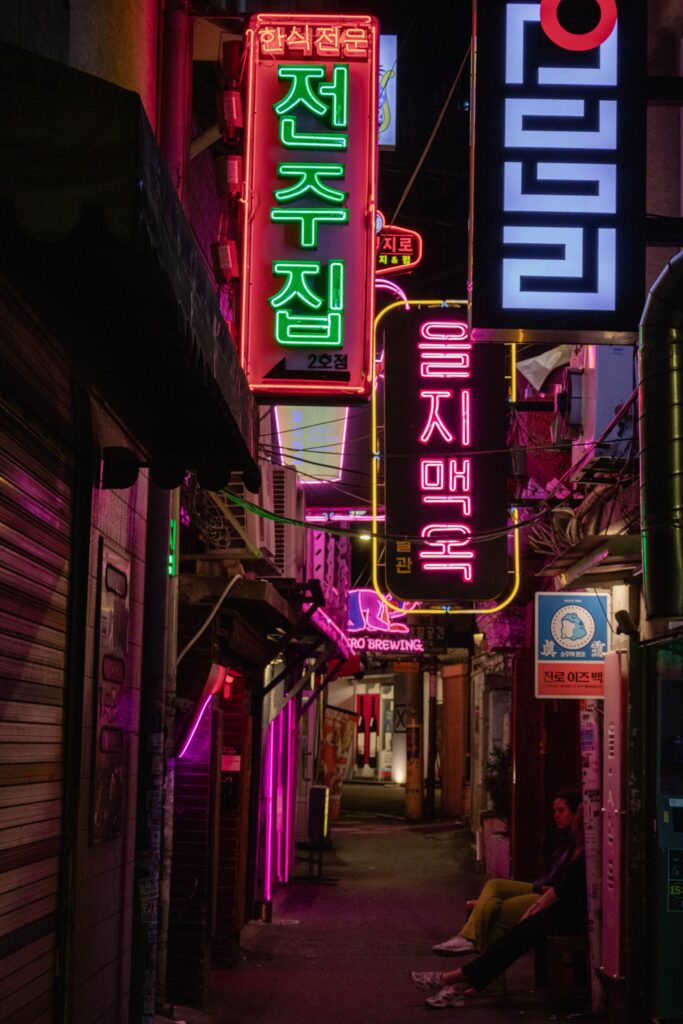
Conclusion: Embracing the Market Experience
Exploring Seoul’s traditional markets offers a rich tapestry of sights, sounds, and flavors. Each market presents a unique Korean cultural narrative, inviting you to engage, learn, and savor. Embrace the lively market atmosphere and uncover the vibrant spirit of Seoul through its captivating market scenes.
Looking for accommodation in Seoul?
Start with Stay Korea
Fill Out the Form Below to Get Started
The more info you share, the better we can match you!






















